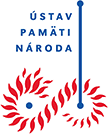HALADOVÁ, Silvia: Reflections of collectivization propaganda on the pages of Pravda newspaper from 1951 to the launch of Action „K“ („kulak“)
The communist regime installed in Czechoslovakia after the February 1948 coup d'état used many forms of persecution to achieve its aims. Agriculture was affected by forced collectivization, which disrupted the traditional village environment by destroying private smallscale production and building up collective agricultural production on a large scale. The process of rebuilding society was accompanied by the regime's changing attitude towards different social groups. In the case of the peasants, private farming was seen as a capitalist survival and only largescale agricultural production, represented by large socialist state enterprises, was promoted. As a consequence of these circumstances, a fundamental change in the property and social structure of the countryside took place, which eventually led to a general decline in agriculture and a failure to supply the population with food. This situation was deliberately blamed on the wealthy peasants, the "village rich" or "kulaks" against whom the regime introduced a sophisticated system of political and economic interventions that led to their social, economic and existential disintegration. The role of the press, as a basic instrument of mass communication and also an effective tool of propaganda of the time, was to show the independent peasants as saboteurs of "building of socialism" and to denigrate them before the public as the most serious enemies. The criticism of the alleged opponents of the new conditions reached an extremely virulent level in the pages of Pravda in 1951, such as could not be encountered in any other phase of the collectivisation of agriculture in Czechoslovakia. It was a reflection of a phase of the application of the harshest repression and illegality of the totalitarian regime against the "village rich", which had reached unprecedented proportions. The aim of the present study is to analyse the collectivisation propaganda published in the pages of the aforementioned contemporary press in 1951, with an emphasis on assessing the scope, forms and degree of aggressiveness of the dissemination of purposeful information in the most challenging years of the initial phase of collectivisation, in the context of the turning point events and the socio-political context.

Updated at: 11.11.2024
Print Tweet